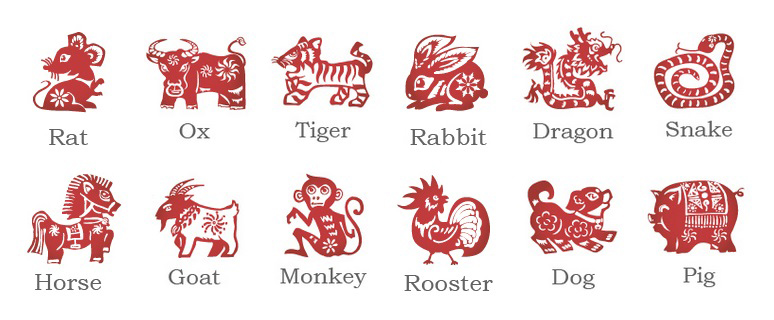Semiotics offers way to solve cultural dilemmas

Semiotics is widely applied in many fields and it is emerging as a vital concept in contemporary culture.

The Chinese zodiac sign is a repeating cycle of 12 years, with each year represented by an animal.
Signs are a means of making sense of the world. As a species, we seem to be driven by a desire to seek meaning, and once that stops, the human mind will also cease to be. Therefore, thinking in and interpreting signs are considered fundamental characteristics of human existence. Signs can be thought of as codes with a meaning or message behind them.
Semiotics is the study of meaning because any meaning has to be conveyed in signs. Until recently, some Western semioticians have defined semiotics as “the study of signs.” However, this definition hardly makes sense in Chinese, and it cannot really be upheld in English, either.
Though there are a number of disciplines that aim to study meaning, such as logic, rhetoric, phenomenology, hermeneutics, linguistics, stylistics and cognitive science, semiotics is of the greatest general theoretical and practical significance in terms of expressing, conveying and receiving meaning.
Culture can be seen as a collection of meaningful activities in a society. In the end, all cultural questions involve generating, disseminating and interpreting meaning. Therefore, it is human culture that lies at the heart of semiotics. The main task of semiotics is to provide a common methodology for contemporary humanities and social sciences research.
Semiotics, culture
From a semiotic perspective, all kinds of cultural activities can be closely examined at microscopic and macroscopic levels to achieve an in-depth understanding of the principles that underlie phenomena as well as a bigger picture of the cultural trends. Semiotics is widely applied in many fields, earning it the nickname “the mathematics of human sciences.”
Semiotics is an invaluable tool for understanding some pressing issues in Chinese culture. The ethical value dilemma in contemporary China is actually a matter of meaning. If we only consider morality as a social benefit, we in fact put the baseline of ethical theories into practical context. For example, one may say, “If you don’t help others, who will lend you a hand next time you are in trouble?”
As far as semioethics is concerned, ethics is tied to the meaning of life, and it is the fundamental requirement for one’s character as well as a necessity for a sense of self.
In addition, we are facing a series of challenges brought about by technological developments, such as virtual reality, robots and ecological problems. We have been assessing these issues based on the actual interest of human survival, which is hard to define since interests will vary significantly in the present, the short term, the long term and the distant future. It is impossible for the entire world to subjugate its interest to the needs of humanity as a whole in the distant future. However, when we look at the world as a shared world of meaning between human and other existence, we will see the future of human beings from a completely different point of view.
More importantly, semiotics is not merely a tool for analyzing culture, because signs are emerging as a top priority in contemporary culture. In the early stage of human civilization, symbolic activity served physical activities by coordinating material production, such as cooperation in hunting and farming. It was only in cultural activities and rituals on some religious or political occasions that the meaningful connotation of signs was stressed.
Symbolic era
In the last 20 years, there has been a drastic change in the course of human history. Contemporary culture rushed into a “highly symbolic” era characterized by more symbolic consumption than material consumption. Accordingly, symbolic production has also transcended physical production. At present, the role of material producer is not the sole source of an individual’s personal value. It is also their role as a consumer, in particular a consumer of symbols, that gives one a sense of existence.
Also, the competition for symbolic power at all levels of society and in the arena of international culture is more fierce than that of other control rights, while the control of soft power, namely the Internet and big data, is prioritized over the demand for tangible objects.
Today, the problems facing nation-states as well as the whole of human civilization are largely symbolic issues. Whether we are concerned about the future of humanity or we are trying to seek happiness in our personal lives, we cannot identify the nature of these problems, let alone respond to them, if we do not understand symbols.
In one aspect, industries need symbolic activities to form an industrial and commodity culture. If national production lacks a certain “something” that represents the value of brand and fashion, industries will always be stuck at a low value-added stage.
What’s more, culture itself has developed into a cultural industry characterized by symbolic activities, which is why after-work pastimes, such as dancing, sports, films and tourism, have become an important part of the tertiary industry. Industrial culture and cultural industries have transformed the world’s economic structure. Both must be achieved by symbolic activities, and this happens to be a weakness of the Chinese cultural economy. Thus, it is urgent to conduct a comprehensive semiotic study of China’s consumption culture.
In recent years, semiotics has been booming in China and many other countries in the world. Many scholars have studied symbols as a major topic when analyzing the future of contemporary culture. Disciplines such as communication, art, film, design and brand research that are closely related to symbols in universities have turned toward semiotics.
Semiotics in history
Modern semiotics started in the early 20th century, but semiotic thought on the meaningful activities of human beings can be traced back to a long time ago. Zhouyi or the Book of Changes, a classic in ancient China, was the first book in human history to use a system of symbols to identify order in random events.
Confucianism, Taoism, Mohism and Legalism in the pre-Qin Dynasty (before 221BC) have deeply probed into the issue of meaning and conducted heated debates.
During the Han Dynasty (206BC-AD220), the concept of a universe governed by the sign system of yin and yang and the five elements (wood, fire, earth, metal, and water) had a far-reaching impact on the Chinese people’s way of thinking.
The Vijnana-vada school of Mahayana Buddhism in the Tang Dynasty (618-907) and the prospering Chinese Chan Buddhism in the Song dynasty (960-1279) were sources of advanced semiotic thoughts. These spiritual achievements have made China a great power of semiotics.
Cultural criticism
Semiotics has been advancing rapidly toward two directions in the last 30 years. One is its integration with other schools of cultural criticism. The other is a broad application in a range of cultural studies.
Notably, its alliance with Marxism prompted the development of sociosemiotics, generating some well-known theories, such as Louis Althusser’s ideological composition studies, Fredrick Jameson’s political unconscious, Stuart Hall’s representation and decoding theory, Pierre Bourdieu’s symbolic forms of capital and Jean Baudrillard’s attempt to analyze commodities from the standpoint of semiotics.
They were mainly driven by the critical spirit of Marxism, and semiotics is centered upon the idea of cultural critique. Marxist semiotics has become a trendy field in contemporary academia, which serves as the basis of semiotic cultural studies.
Semiotics and psychoanalysis complement each other. The “rhetoric” in Freudian dream analysis is similar to symbolic analysis. Jacques Lacan used the notion of the “signifier” to understand symbolic activities in the subconscious. Julia Kristeva’s influential theories of the “symbolic” and the “semiotic” linked psychoanalysis and feminist theory. Judith Butler’s “performative” theory has indeed established the semiotics of gender.
Phenomenology, existentialism and hermeneutics theories focus on the production of meaning in the consciousness as well as the standards of comprehension, so they have a certain synergy with semiotics. Charles Sanders Peirce and Edmund Husserl attached great importance to the phenomenology of signs. Maurice Merleau-Ponty was the first one to think about merging semiotics and existentialism. Jacques Derrida developed a form of semiotic analysis known as deconstruction through analyzing Husserl’s theories from a semiotic perspective. Jonathan Culler made new interpretations of semiotic analysis theory with the knowledge of aesthetics.
The aforementioned theories, together with semiotics, form the four pillars of contemporary cultural criticism while interdisciplinary studies have produced fruitful results and are likely to be indispensible for the future of semiotics.
To establish cultural semiotics, we need three steps. The first is following the path of semiotics and summarizing the existing theoretical achievements regarding the discipline. The second is examining the contemporary development, especially the integration with other schools of cultural criticism as well as semiotic thinking in ancient China. The third is identifying semiotic application in various humanities and social sciences disciplines. On this basis, we can come up with a relatively complete cultural semiotics theory.
However, prejudice remains that semiotics is from the West. In fact, traditional semiotic ideas in China are quite adequate and need to be systematically sorted to establish a cultural semiotics theory system with Chinese characteristics so that semiotic studies can resolve the nation’s pressing issues and elevate China’s standing as a great cultural power.
Zhao Yiheng is a professor at Sichuan University.
